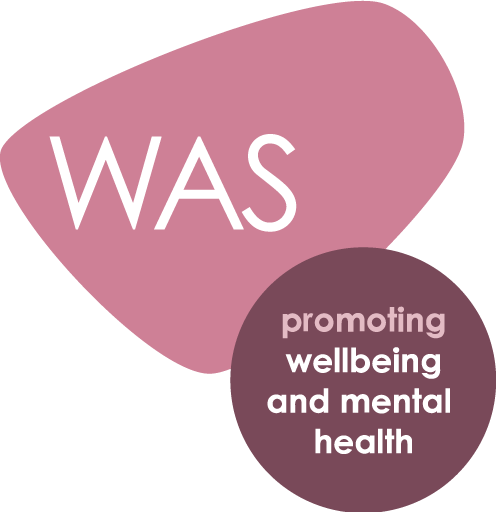Establishing a school-wide culture of resilience should be at the forefront of what we do to address the alarming prevalence of mental health issues among young people.

'It is not the strongest of the species that survives, nor the most intelligent. It is the one that is the most adaptable to change.'
Charles Darwin
Mental health has been in the news this week, following Prince Harry’s honest interview about how he couldn’t directly address his mother’s death until recently, and Prince William talking about the need to discuss feelings openly the following day.
Impact is often important in mental health, as Professor Sir Simon Wessely put poignantly when he pointed out that Harry had ‘achieved more good in just 25 minutes than I have in 25 years’.
Indeed, how we ensure that our messages have an impact is often the hurdle we fail to clear.
At the end of March, I was fortunate enough to address the North Yorkshire Inclusion Conference in Harrogate. Attended by almost 200 SENCOs and school leaders, it was an excellent event, and a timely reminder of some of the real issues schools and communities face today, as touched upon in my look at the ‘mental health crisis’ in a previous post.
I think it’s as useful as ever to be clear on the facts. Mental health problems are linked to premature mortality and can also be life-limiting. A young person with an emotional disorder is:
As well as the personal cost, the estimated long-term cost to the economy of mental health problems is £105bn a year, according to a report published in 2016.
In a 2015 international comparative study by York University as part of the Children’s Worlds project, England ranked 14th out of 15 for children’s satisfaction with life. The survey presented findings from over 30,000 children aged 10 to 12 years-old in 15 countries across four continents.
The UK ranked in the lower half of the table on all three measures of wellbeing used in the report: positivity about the future, happiness over the last two weeks and satisfaction with life as a whole.
On the index of satisfaction with life, the UK ranked below Poland and Nepal, and above only South Korea.
This clear message provided the foundation of a day that included some real-life local stories. A poignant one for me was this:
‘No real help was offered, no safety net was there to catch us, no clear path was shown to us so we knew where or who to turn to. What help was finally offered was neither enough or the correct treatment. She has spent the last year and half in adolescent mental health units across the country, this did not help her and perhaps with earlier intervention the outcome could have been very different.’
As with many such accounts, numerous things could, and should have been done differently. Therein lay the essence of the event, and in addressing these concerns practically; offering practical and ‘real’ strategies that can make a difference in schools, as part of the wider local and national picture.
My keynote address explored emotional regulation and whole-school strategies from our research into autism. What interested me greatly was the other main keynote delivered by Lisa Williams, head of commissioning support at YoungMinds on risk and resilience.
Defining mental health
Lisa started by asking delegates to define mental health; and then shared the definition that YoungMinds have been using for over a decade:
‘…the strength and capacity of our minds to grow and develop, to be able to overcome difficulties and challenges and to make the most of our abilities and opportunities’ ~ YoungMinds, 2006

Among the many facts and figures presented were those above: there is on average a 10-year delay between young people experiencing first symptoms and receiving help!
As I mentioned in a previous post, parity of esteem is crucial to delivering good quality mental health provision; if you broke your leg, I'm certain you wouldn’t have to wait 10 years for treatment!
According to a select committee report from 2015, ‘there are serious and deeply ingrained problems with the commissioning and provision of children's and adolescents' mental health services. These run through the whole system; from prevention and early intervention to inpatient services for the most vulnerable young people.’
With the raft of educational change and additional financial pressures well-documented, it is important to be realistic about what a school can do within its wider community. After all, teachers are not qualified mental health professionals, and ‘diagnosing’ mental health needs won’t help anyone without appropriate pathways and provision in place.
This slide from Lisa’s presentation prompted some interesting discussion.

There were some fascinating answers from delegate; including one suggestion that we build a bigger wall/fence so no child ‘falls in’.
However, as was pointed out every child plays in the water, some dip their toe and all is good; some go for a swim but still return to shore; but some get carried away by the current. The priority has to be helping young people sooner.
On average, children with higher levels of emotional, behavioural, social, and school wellbeing have higher levels of academic achievement and are more engaged in school, both concurrently and in later years. Furthermore, children with better emotional wellbeing make more progress in primary school and are more engaged in secondary school. (Gutman and Vorhaus, 2012)
In an average class of Year 11 students we might typically expect that:
 Demonstrate impact
Demonstrate impactLooking to demonstrate a commitment to promoting wellbeing as a fundamental part of your school life?
Developed in partnership with the National Children's Bureau, the Wellbeing Award for Schools leads you through a simple process of self-evaluation, action planning and accreditation.
It has been reported that the government plans to put full-time NHS professionals in a trial of 255 schools, following the Royals’ comments on the stigma surrounding mental illness. In the current climate, I think it’s sensible not to place any significant hope in such a move, but focus instead on what schools can do here and now with the limited resources at their disposal.
I’m very interested in the academic resilience work undertaken by YoungMinds. Their work helps schools understand how to ‘close the gap’ for the most vulnerable children and young people in your school, by exploring systems and processes to help build resilience for all pupils.
Although the packages YoungMinds offer are developed through bespoke discussions, they share a common set of messages for schools and SENCOs to consider when building a culture of resilience.
For me, the final point is the most crucial. Schools should promote the idea that resilient young people:
How do your school values and ethos match these key areas? HandsOnScotland has some useful suggestions for building resilience.
One of the simplest yet most powerful things you can do is listen. It can be as beneficial for your own understanding of the mental health issues young people face as it can be for the young people themselves who might simply need someone to confide in.
Like many things, mental health can be confusing, but it’s nothing that can’t be simplified by listening with an open mind.
With all the stress and upheaval in modern education, a reminder is more timely than ever.